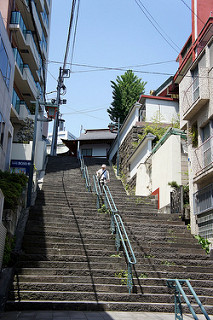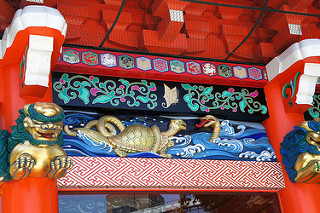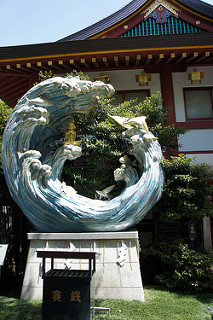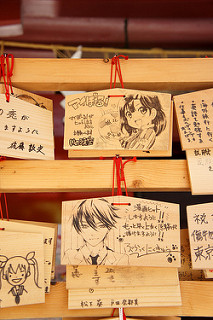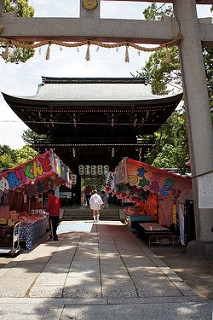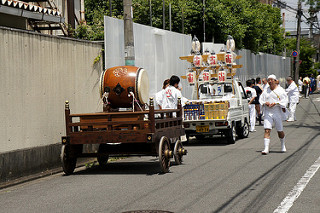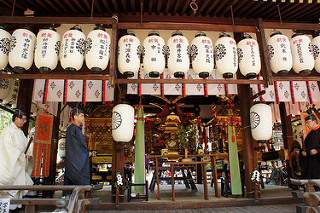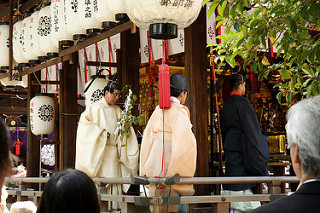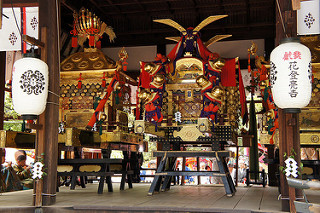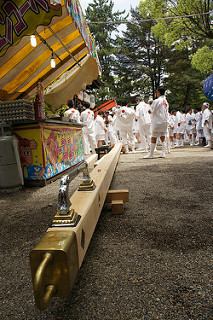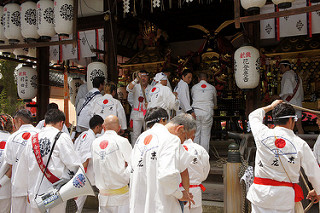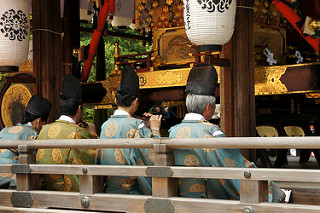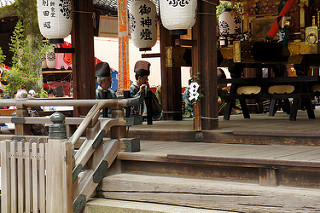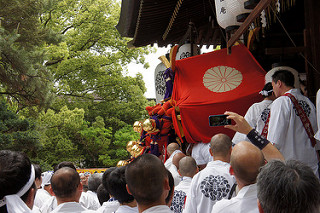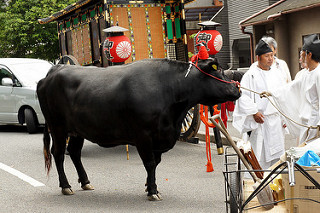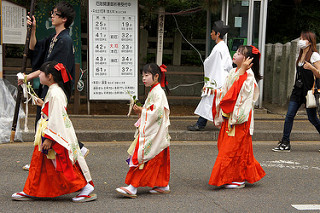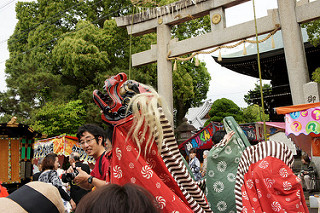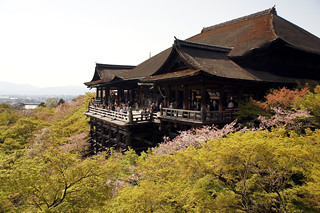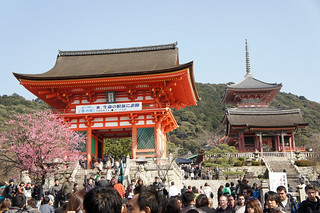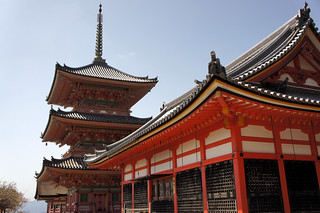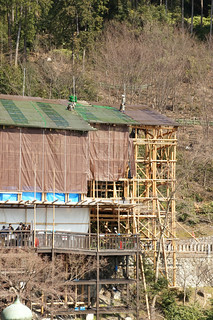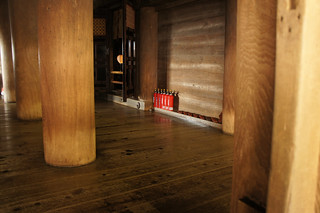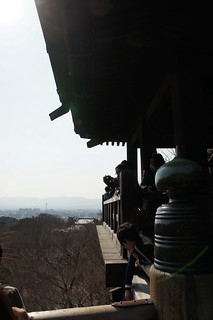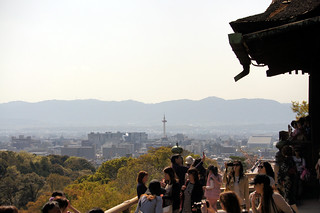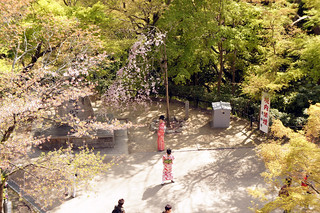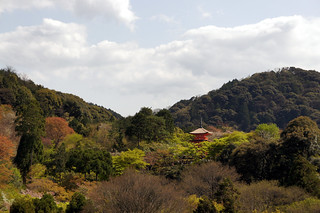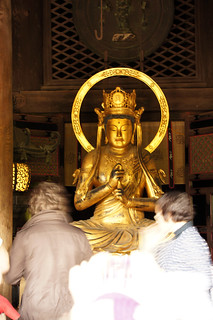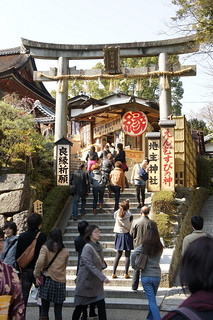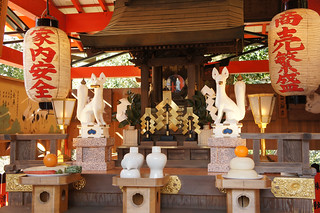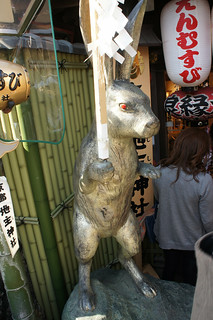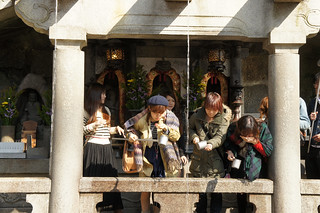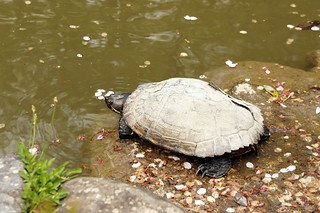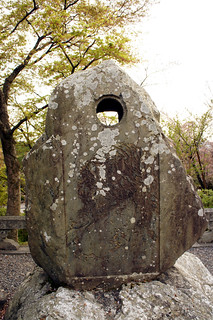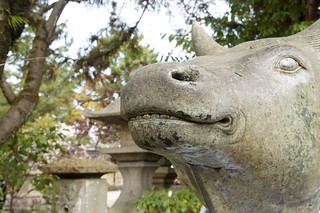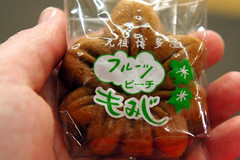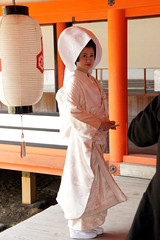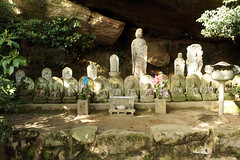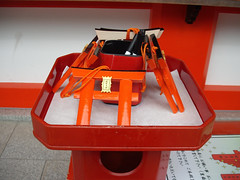Each of our previous visits to Japan have focused on the stretch of Honshu that runs between Hiroshima and Tokyo. We have stayed in Hiroshima, Osaka, Kyoto, Kamakura, Kawaguchiko and Tokyo. We have visited Miyajima, Uji, Nara, Iga Ueno, Enoshima and various areas of Tokyo. This year we decided to do something different. We decided to head north. We chose the northernmost city on Honshu, Aomori.
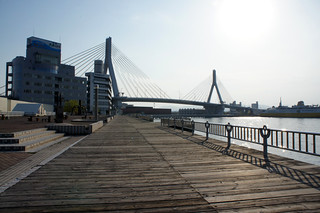
My husband has a friend at work who is Japanese. He is from Tokyo, but his father is from Hokkaido and some of his family live in Akita. When we told him that we were going to Aomori he laughed. Then he asked why.
While we were in Tokyo, in the week before we took the train to Aomori, whenever we told people that we were going to Aomori from Tokyo they, too, laughed and asked us why.
Why not? For me, the choice was easy. Aomori is an area with a rich history. It is an area where there are Jomon era archaeological sites, where the influence of the Ainu people is still apparent. It is also the place that the best apples in the world are grown.
We stayed at the Richmond Hotel Aomori, which is a recently built business hotel a 15 minute walk from the train station. Its appeal was the presence of a bakery and a Lawson on the ground floor – information about vegetarian food in the city was sparse, and at least with access to bread products and a conbini we knew we’d be able to get something to eat. I can recommend this hotel wholeheartedly. The staff are helpful and friendly, the room was spacious and comfortable, and both the bakery and the Lawson came in very handy for us! On our way home via Narita airport, we stayed at the Narita Hilton and I really wished that we’d booked into the Narita branch of the Richmond Hotel instead, we had such a good time in Aomori.
We arrived late afternoon, after a very smooth journey on the Tohoku Shinkansen from Tokyo station to Shin Aomori. It was a very short hop on a local train from Shin Aomori to Aomori itself. So short that we had no sooner adjusted the seats to accommodate our luggage than the train was pulling into the station!
We’d bookmarked a couple of Indian restaurants that we’d found on Trip Advisor, but when we went out into the town to find them, they weren’t there. One of them, Akbar’s, was supposed to be just around the corner from the hotel. We found the building, but it was no longer Akbar’s and was very firmly closed. We wandered up and down Shinmachi Dori, the main shopping street, but drew a blank there. Understandably, Aomori being a port city, almost every restaurant was a fish restaurant. This restaurant/cocktail bar on the station approach kind of sums up Aomori’s food options.

We tried one place, Uotami, that seemed to offer a range of tapas style snacks on the laminated menu outside on the street, but stepping inside was such a surreal experience that we didn’t stay. Now I’ve found its website, I know it was an izakaya, not a restaurant, and we were bumbling fools.

It was dark when we went in. As we stepped through the automatic doors, a recorded voice repeatedly and loudly chanted “Arigatou gozaimashita”, as though we were leaving. We stood for a while, thinking that someone might come to greet us. “Arigatou gozaimashita” the voice chanted. Then suddenly it changed to “Irasshaimase”, which at least was a greeting of sorts. There were lots of lockers lining one wall, but it wasn’t clear what we were supposed to do. Just as we were thinking we would leave, a bored looking young woman appeared. She said something, but I couldn’t hear her over the squawking electronic cries of “Irasshaimase”, so I moved closer and said “Sumimasen. Sukoshi Nihongo o hanasemasu.” She repeated what she had said. I still didn’t understand, so tried, “Sumimasen, yukkuri hanashite kudasai.” She looked annoyed and muttered something while shrugging, so I said, “Wakarimasen, sumimasen,” and we left. She didn’t seem bothered in the slightest. I wish I had known it was an izakaya and that I had read this description of what to do in an izakaya before we got there. The surrealness would have made sense!
We went to a nearby Daily Yamazaki and bought make-your-own zaru soba, onigiri, egg sandwiches and beer. I also had a packet of aubergine miso soup that my husband had bought for me at Chabara in Akihabara. That was our first meal in Aomori!
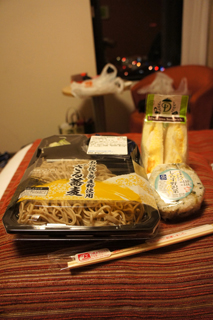
The next day we went into the city to explore and see if we could pinpoint places that we could eat. It’s an odd city. I don’t think it helped that we arrived at the tail end of Golden Week and a lot of places were closed for an extended holiday. We wandered around the back streets and stumbled upon the Uto-jinja shrine. This was a pretty spot, with some late cherry blossom and a lily pond. It felt very tranquil. There was a man feeding the fish and the birds at the lily pond.






After this peaceful introduction to the city, we headed to the ASPAM building, where we picked up a tourist map, watched a koto performance, and bought a few souvenirs. The building is A shaped and very striking. Outside is a postbox with something that seems to be a feature of Aomori prefecture – a statue on the top of a local attraction.


As well as being famous for its apples, Aomori prefecture is known for its kokeshi dolls. In one of the ASPAM shops there was a display of kokeshi that weren’t for sale. They represented the staff who worked at ASPAM. Cute!

I love kokeshi dolls, so bought a couple to add to my small collection.
Once again, food was hard to find so we headed out for the A-Factory. This is a lovely space that opened in 2010 and aims to showcase the best in the prefecture’s produce, from food to crafts. It’s very light and airy, and we had a good look around, buying some beautiful wooden items carved from apple wood.

I’d read online that the food court included vegetarian options, but all we could find was a place to sample different apple-based alcoholic drinks, an egg tart shop, an ice cream shop, a handmade crisps shop and the cafe which only served fish or meat. Perhaps we were unlucky. Perhaps the internet sometimes lies.
We left and walked towards the station where we found an udon bar. Kitsune udon is our fallback option. Because it’s not obviously fishy, we push to the back of our minds that the broth is likely to be fish based. It’s a compromise we’ve had to come to terms with when travelling around Japan, because otherwise we’d struggle to eat healthily at times. I liked this particular udon bar. The staff were very efficient, and you could watch them prepare the udon noodles to order, dropping them by the basketful into the scalding water while someone else prepared the bowl of broth. They tasted good, as well.

After we’d filled our bellies with udon, we headed back towards the shopping area of the city. We went to Auga first, a department store that stylistically is stuck in the 1980s, but that contains a surprising array of funky shops. There were clothes shops, a branch of Village Vanguard and a lovely little shop specialising in antiques and quirky stationery. I could have spent a fortune in there, but managed to restrain myself.



We decided to scope out the Fresh Food Market, which Trip Advisor suggested was in the basement of Auga. According to what I’d read, you could buy a bowl of rice and a book of tickets and then wander among the stalls in the market using your tickets to buy food samples to put on top of your bowl of rice. We thought there was a chance we’d be able to find pickled vegetables and maybe some tamagoyaki. Down in the basement of Auga, though, the market seemed to be predominantly fish and we couldn’t find anywhere to buy a bowl of rice or a book of tickets.
We headed back out to the street and wandered around looking for another Indian restaurant I’d read about online, Ganesh. The Wiki Travel directions were vague in the extreme and of course we couldn’t find it! We did see some interesting buildings and a gang of cats, though.


As we were wandering, looking at the map and trying to locate NikoNiko Dori which our tourist map said was the location for the Fresh Food Market, a woman stopped to ask if we needed any help. I explained that we were trying to find the Fresh Food Market and she pointed us towards an anonymous looking low level building that reminded me of the covered market in my home town. We thanked her for her help and, as we walked up the street towards it, we also spotted an Indian restaurant called Taji’s. Success at last on the food front!
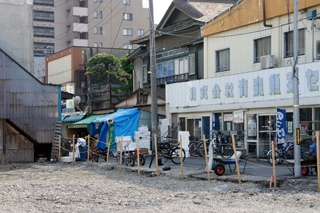
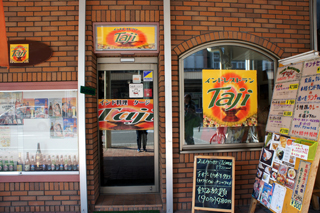
We ended up eating at Taji’s twice during our stay in Aomori. The food is amazingly good there, and amazingly cheap. I think we tried all of the vegetarian options on the menu. The restaurant is run by a young couple. The woman speaks Bengali and Japanese, while the man speaks Bengali and English. I tried to add it to Trip Advisor, but the site told me that its location doesn’t exist. If you’re in Aomori and want some tasty Indian food, it’s in the Maruyama building at 12-11 Shinmachi Itchome. The Japanese address is 030-0801 青森市新町一丁目12-11丸山ビル.
On our second day in Aomori we visited the Aomori Prefectural Folk Art Museum, which was a 10 minute walk from our hotel, tucked away in the back streets of the city. The building is very attractive, and the exhibits interesting and well put together. We ran out of time to visit the Jomon archaeological site, but the displays of Jomon pottery and the explanation of the Jomon era culture at this museum were plenty good enough. The collection includes some Prefectural Treasures, historically and culturally significant items like the pottery head below and a number of different Goggle figurines and earthenware jars.




The upstairs galleries take the visitor through the whole history of Aomori Prefecture, from prehistoric times to the mid 20th century. I found the displays about the Ainu very interesting, seeing reproductions of their housing and displays of Ainu art and textiles. There were a lot of documents and maps used in the displays which, as an archivist, I really enjoyed seeing.
There was a special exhibition of Japanese toys through the ages downstairs. It reminded me of the collection at the toy museum we visited in Kawaguchiko. We spent as long in this gallery as we did in the historic galleries upstairs!


Entry to the Prefectural Museum costs 310円 and we received an A4 sheet in English explaining briefly the main exhibitions. There was also a fun trail for children to follow where you could collect a stamp in each of the exhibition zones. Of course, this 40+ child followed the trail, and had a go on most of the interactives while I was at it!
We also visited Nebuta House Wa-Rasse, the museum that celebrates and documents the history of the annual Nebuta Festival in Aomori. The building is stunning, and only opened in 2011.
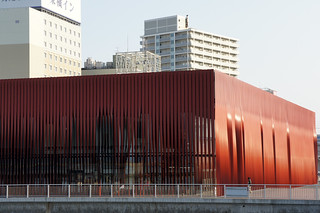

Inside, once you’ve paid your 600円 entry fee to access the Nebuta Hall, you experience an immersive trip through the history of the festival. You can even have a go at designing your own Nebuta face, which then displays on a mask above the screen.


In the main hall visitors can take an up close look at five of the floats that have appeared in the most recent festival and have their photograph taken alongside their favourite. There are sections of lanterns dotted around that you can touch, and areas where people are working on lantern sections, applying the papier mache layers and painting the designs onto the paper. Guides work the floor and take time to talk to visitors. The woman who spoke to us was thrilled that we had travelled so far. The people of Aomori are very proud of their festival and she seemed genuinely touched that foreign tourists were interested in its history.




After our visit to Wa-Rasse, we headed for the Fresh Food Market, which was one of the foodie highlights of the trip. If you’re in the city, you should definitely do it. It’s incredibly good value and an opportunity to talk to local people. We had an entertaining interaction with an obaachan (おばあちゃん) who took quite a shine to me. I wish I had taken her photograph.
But the food. The way the system works is, you find a stall with a brown Don (丼) symbol and buy yourself a book of tickets. We got books of six tickets for 540円. Two tickets bought a bowl of rice, which left four tickets to use for toppings. To find your toppings you walk up and down the stalls, looking for the blue Don symbol. Most of the stalls have fresh fish, either served raw as sashimi or grilled. Some of the stalls have pickled vegetables, tamagoyaki and stewed vegetables. We did very well, finding a burdock, bean, noodle & tofu mix as well as varieties of pickles and omelette. My obaachan encounter involved the selection of pickles. She wanted to feed me samples to help me choose. I kept trying to take the chopsticks off her, but she snatched them away each time, cackling her head off, until I gave in and let her put the food into my mouth for me. Hilarious. I could have brought her home with me!
Once you have your toppings, you can sit at a picnic table and help yourself to soy sauce, wasabi and free green tea.

Our next tourist stop was the Aomori Forestry Museum. This looked as though it might be an interesting experience. I got the impression that it would explore the history and management of forestation in the prefecture. We decided to walk, following our route on Google maps. This wasn’t a problem, except it started to rain heavily and we were soaked by the time we reached the museum. That I didn’t take a single photograph while we were there perhaps says something about how disappointing it was.
The building is early 20th century and could be beautiful if it were better maintained. When we went in, the staff in the office seemed surprised to have visitors. The man who sold us our tickets (only 240円) asked, in Japanese, how good our Japanese was. When I said that I spoke a little, he laughed and wished us luck.
As we went round, it became clear why. There was no English at all and the interpretation text was very detailed and technical. There were interactives that looked as though they’d been built in the 1970s, and some of the exhibition rooms were unlit. We followed the route set out in the leaflet. The first room was about how trees get energy to grow and how they reproduce. The next room was full of examples of what wood could be used for. The third room was about a local skier with some examples of his medals and quite a few sets of his skis. The fourth room was an exhibition of photographs of wild flowers through the seasons, while the fifth contained examples of wooden furniture. Room six was some kind of office, which I’m sure must have had some significance, but we couldn’t work out what it was. The seventh room was in near darkness and didn’t make any kind of sense. There was some kind of broken interactive and some other wooden structures. The last room was full of wooden toys, kitchen appliances (not wood), utensils (some wood, some not), clocks and cameras (not wood). On one of the sets of stairs we took there was an inexplicable bearskin with a rifle. There was also a room with Jomon era pottery and a Jomon era house made out of cardboard. Very, very strange.
On reflection, I wouldn’t recommend it. Even if you are fluent in Japanese, I don’t think there’s much to be gained from going there. I can’t imagine that visitors learn very much about forestry.
On a cheerier note, we did experience some of the Aomori nightlife. We also found an excellent Italian restaurant just up the street from the hotel, called Capricciosa. Here we had delicious veggie pasta on two different nights, apart from the night when I didn’t read the menu properly, ordered the aubergine spaghetti and didn’t realise that the aubergine came in a bolognaise sauce. I spent most of the meal trying to pick around the minced beef. (Moral: always read the menu properly!)
On our way back from Capricciosa to the hotel one night, we passed an intriguing sign.

How could we resist? We went up the narrow stairs and entered a low-lit emporium which had the promised dart board and a proprietor who looked like a Japanese Johnny Depp. He showed us to a table, then fiddled with his iPhone, speaking into it in Japanese. Siri must have translated, because he looked up and said in very correct English, “How may I help you?”
We ordered our cocktails. My Black Russian was pleasingly potent. Our cocktails came with bar snacks. There was a pleasant buzz, aided by the jazz playing in the background. We ordered a couple more.
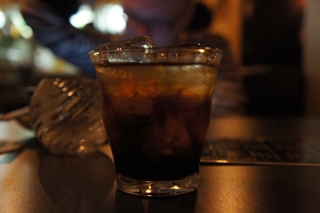
Afterwards, we staggered back to the hotel. I’m sure we passed Mickey Mouse dressed in a Santa Suit on the way. He seemed to need the bathroom, from the way he was holding his knees together. We didn’t make eye contact. It was for the best. When we got to the hotel and looked back along the street, he had disappeared. Odd.
After initial doubts because of the struggle to find food on our first evening there, I really enjoyed our stay in Aomori. I would definitely go back again. There are plenty of places that we didn’t manage to see. I might be tempted to hire a car next time, as using public transport was difficult at times. We did side trips to Hirosaki and to see the Showa Daibutsu at Seiryou-ji, and we also popped up the coast to Asamushi Onsen, all of which I’ll cover in separate posts.
Going north presented a very different aspect to Japan. It’s perhaps not for everyone, but if you are interested in a country beyond what its major cities have on offer, why wouldn’t you explore as much of it as you can?

